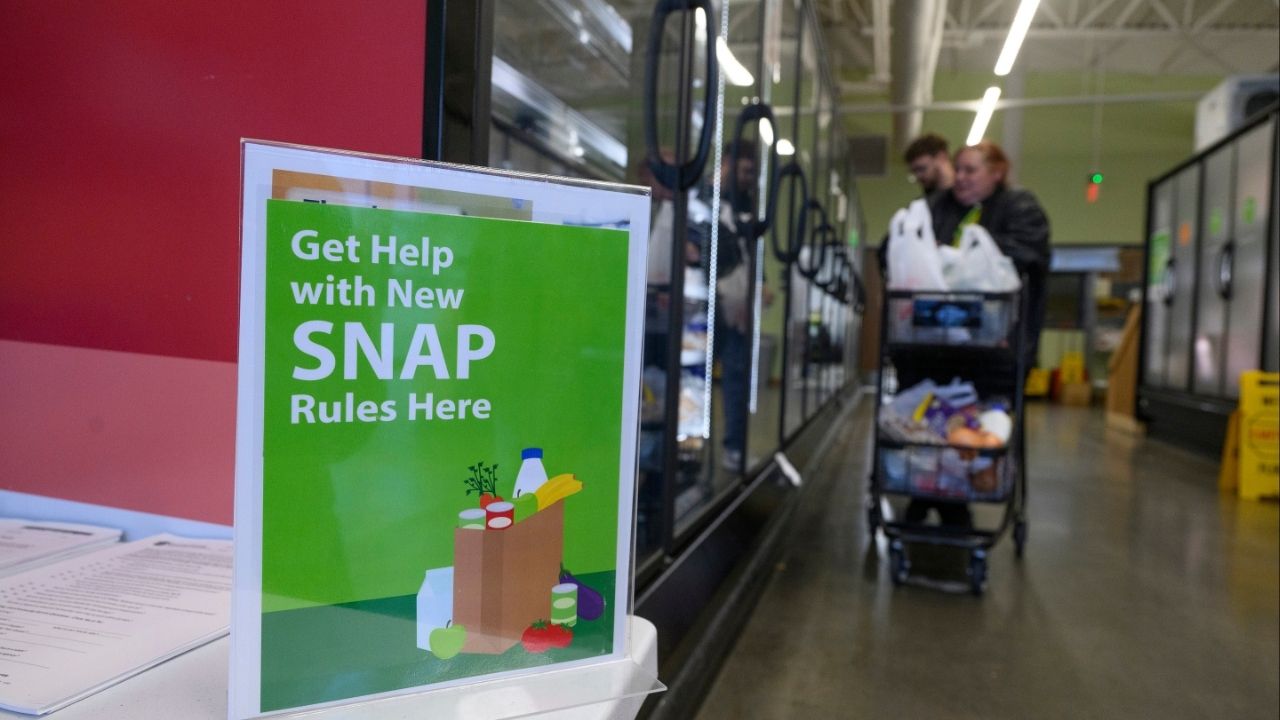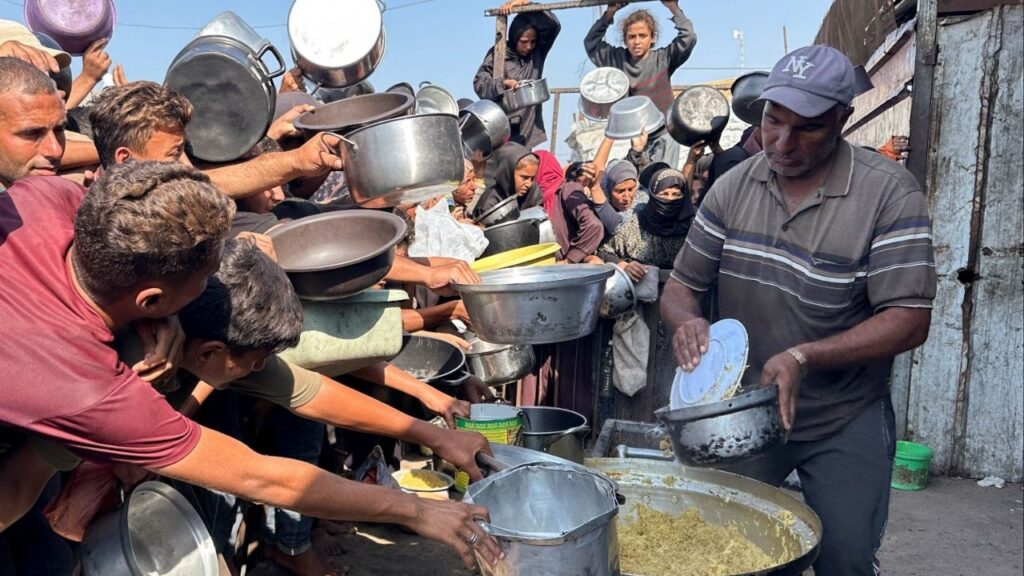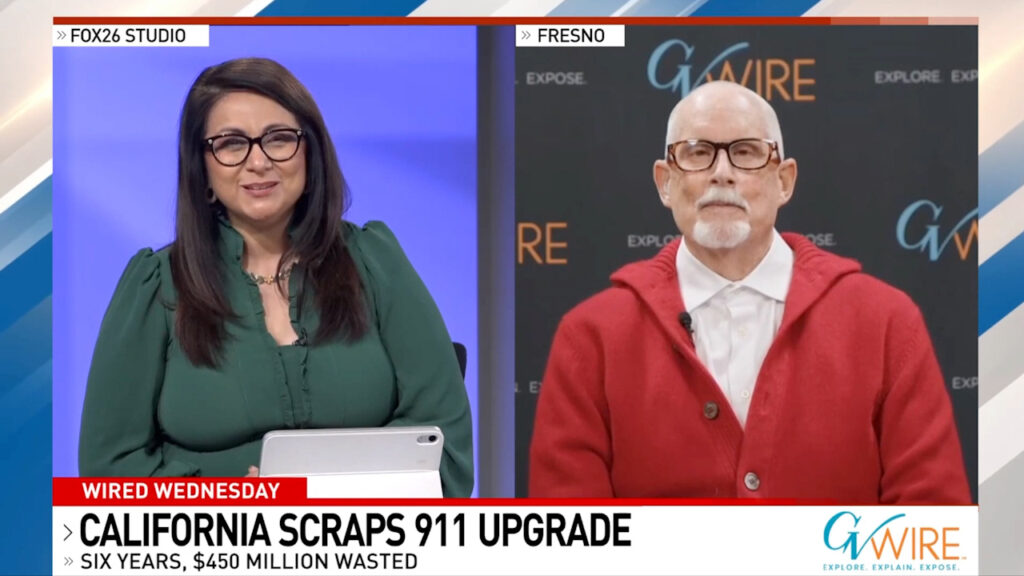A table with information at the Greater Pittsburgh Community Food Bank in Duquesne, Pa., Oct. 23, 2025. For the 42 million people who rely on the Supplemental Nutrition Assistance Program, or SNAP, the country’s largest anti-hunger program, it has been a chaotic, nerve-racking week. (Jeff Swensen/The New York Times)
Share
|
Getting your Trinity Audio player ready...
|
In New Jersey, a single mother struggled to figure out how to feed her two young sons with $50.
In Oklahoma, a 61-year-old woman questioned whether driving to a food pantry was worth the gas money.
And in Colorado, a woman grabbed food from a Walmart dumpster.
For the 42 million people who rely on the Supplemental Nutrition Assistance Program, or SNAP, the country’s largest anti-hunger program, it has been a chaotic, nerve-wracking week.
Because of the government shutdown, the Trump administration initially sought to stop supplying benefits in November. But after lawsuits, the administration said Tuesday that there would be partial payments from SNAP, but that it was “going to take some time.”
Many recipients have searched for sustenance ever since.
The New York Times asked dozens of SNAP recipients how they were coping. In interviews, they talked about the confusion and anxiety, as well as the hard choices. Here are some of their stories.
Her Customers Depend on SNAP. She Does, Too.
Mary Schiely, 49, Middletown, Ohio
Mary Schiely can’t escape SNAP. It consumes her at home and follows her to the grocery store, where she has worked for almost 15 years. Most of the store’s customers depend on SNAP, she said, and so does she.
Decades ago in Middletown, Ohio, where Vice President JD Vance grew up, families worked in factories and earned a steady paycheck. But now, Schiely can measure the town’s pain through the store’s sales. This week, candy purchases were way down. Pizzas, chips and energy drinks were not moving off the shelves as quickly as usual.
“Thanksgiving is coming,” she said, “and no one is sure how they’re going to handle it.”
Schiely also depends on SNAP benefits, almost $500 a month, which augment her $12-an-hour job. Her pay vanishes quickly on rent, electricity, cellphone and Wi-Fi.
SNAP, she said, “is what puts food on the table.”
Her Baby Needs Special Formula. It Costs $75.
Latrica Williams, 26, Milwaukee
Latrica Williams has not received SNAP funds since early October.
Her baby, 4 months old, was born with a heart defect and needs a special formula that does not trigger his allergies. Williams had paid for it with a combination of federal programs, including SNAP.
“Formula is really expensive,” Williams said. “It’s like $75 a can, and I don’t have $75 to get him a can of milk.”
In Desperation, a Dumpster
Arianna Payton, 25, Granada, Colorado
On Tuesday night, Arianna Payton sneaked into a Walmart parking lot and climbed into a dumpster.
“I grabbed as much as I could,” she said. “I wasn’t even looking to make sure that it was safe.”
When she got home, she inspected everything. She retrieved a few bags of frozen vegetables, meal replacement shakes, cheese and fruit. She also found some loaves of moldy bread that she thought she could salvage.
Last week, Payton, who has had health issues for years and lives on disability insurance, tried the only nearby food bank.
“Everything was gone,” she said.
The Federal Government Fired Her
Andrea Grimaldi, 55, Alexandria, Virginia
A year ago, Andrea Grimaldi was the one donating to those in need.
This year, she is the one receiving donations. Grimaldi was fired in February from a new job as a Head Start specialist at the Department of Health and Human Services. She received her last paycheck in May.
Although Virginia will subsidize SNAP benefits through November, she has started to ration just in case. She still has $176 of her $292 monthly SNAP benefits left from October. Family and friends have also organized food and gift card deliveries.
She has cut her expenses, including streaming services and ride shares. But she has been forced to dip into her savings.
Grimaldi has applied to jobs for months without success. She never expected to rely on government benefits, including SNAP.
“It could happen to anyone in the blink of an eye,” she said.
Working, but It’s Not Enough
Jennifer Lunn, 55, Lewisville, Texas
Jennifer Lunn went to a food pantry for the first time Saturday. She’s a customer service agent with four children. For the past two years, she has been able to feed her children because of SNAP.
Without it, she found herself this week at the Heart of the City Lewisville, a pantry near her house, north of Dallas-Fort Worth. Lunn received a box with chicken, canned goods and salad ingredients.
“This is something I never thought I’d have to do,” she said.
With SNAP, she usually buys noodles, potatoes, vegetables, chicken and ground beef, anything to keep her teenagers fuller for longer.
But, she said, they plow through the food. “Two and a half weeks, we’re done,” she said.
Will His SNAP Benefits Come?
Larry Robinson, 61, Orlando, Florida
Larry Robinson clutched his shopping bag. He was on his way to get some fruit. He’s been on SNAP since he retired as a mental health counselor in 2019.
He pulled down his Under Armour shirt, revealing a scar on his chest from triple bypass surgery. He said he has had to “double down” on his health concerns since then.
His SNAP benefits are supposed to arrive Sunday. But he is unsure whether he can count on it.
“I financially put some stuff away,” he said, “but it will definitely provide hardship for me, because I wouldn’t have that meal that I’m used to having.”
Two Sons and a SNAP Balance of $50
Rosy Hernandez, 32, Passaic, New Jersey
When Rosy Hernandez, a single mother, called SNAP for assistance, an automated message said that her November payment, usually $748, was not yet available and might be late or not issued at all.
Her current balance: $50.
“It’s going to look a little bit different for me, restocking my fridge this month,” she said.
Hernandez, who has relied on SNAP for two years, cares for her sons, Xavier, 7, and Adrian, 4. She does not work because Xavier, who has autism, needs constant supervision. His needs make keeping a job difficult, although she is looking for part-time work.
She is nervous about relying on a food pantry. Xavier has sensory issues and demands specific food.
“His diet might have to be forcefully changed,” she said. “And there’s just no telling how he will react.”
Off the List: Turkey Sandwiches
Jeanne Nihart, 44, Anoka, Minnesota
At the grocery store, Jeanne Nihart, a single mother, picked up some deli meat, cheese and French bread for her 12-year-old daughter, who loves turkey sandwiches.
Then she remembered that her next SNAP payment was at risk.
“I can’t justify buying meat right now,” she recalled thinking at the time.
Nihart stopped working in 2010 because of health issues, including fibromyalgia, a chronic disorder that comes with pain and fatigue.
She receives a monthly $1,060 disability payment and relies on subsidized housing, Medicaid and a SNAP benefit of $436 a month.
She expects her next SNAP payment will be half the full amount. “It’s better than nothing,” she said. “But half doesn’t keep us fed for the whole month.”
A Farmer’s SNAP Economy
Julia Asherman, 39, Jeffersonville, Georgia
Julia Asherman runs a farm, selling fruits and vegetables to small grocers and green markets. Her customers are often SNAP recipients.
She’s bracing for slower sales and a financial hit.
Late fall, Asherman said, is the worst time to take SNAP benefits away from farmers’ customers. That’s when little money is coming in, but farmers must spend money to prepare for spring planting.
In her town, half the people who buy her produce are on SNAP.
And she needs it, too, for her and her 3-year-old son.
“My take-home at the end of the year already hovers around zero, like many farmers around this country,” she said.
Homeless and Dreaming of Food
Wesley Peake Jr., 51, Tucson, Arizona
Around noon Sunday, Wesley Peake Jr. sat on his wheeled walker outside a grocery store. For breakfast, he ate crackers and cheese, and now, with his hunger slowly building, his mind conjured images of his favorite foods. Chicken, yogurt, bananas.
But Peake, who is homeless, had no money. And his monthly SNAP benefit, $57, may not come as usual Saturday.
The food that SNAP provides usually lasts him about four days. That is a big help because it means fewer trips to a soup kitchen. His osteoporosis has weakened his bones. “I can’t walk that well,” he said, “because my hip sockets are deteriorating.”
He sits outside the grocery store, hoping that passersby will drop some change in his hands. These days he is reluctant to ask people outright for help. They, too, may be losing SNAP.
Food Is Low, and the Car Needs Gas
Deana Pearson, 61, Chouteau, Oklahoma
The grocery store is 12 miles from Deana Pearson’s trailer. The closest food bank is 10 miles away; the closest gas station is nine.
Which trip is worth the gas money?
Pearson, whose jewelry business closed during the coronavirus pandemic, is running low on food. Without her usual SNAP payment, around $287, she must rely on what she has left. On Tuesday, that was $1.18.
A gallon of gas is $2.50.
“I don’t know what I’m supposed to do,” she said. “I’m hoping that maybe someone will give me a ride to the food bank.”
One Thing After Another
Jessica Mayne, 34, Denver
Jessica Mayne began receiving SNAP in 2019, after tumbling misfortunes.
Just before the pandemic, she and her husband lost their jobs. Then there was an accident that totaled her car. After she and her family moved in with her mother, her husband was diagnosed with kidney failure, which requires dialysis and a special diet.
“We were just trying to make it, and every single time something happened,” she said.
They have made progress: Mayne works full time as a behavioral health technician, while her husband works part time in construction management.
They had hoped to get their own place. But Mayne must now handle the loss of her SNAP benefits, $650, for their family of eight.
“We’re stretching all of our meals,” she said. “Everyone hates me for it, but it’s necessary.”
For dinner recently, she used 1 pound of ground beef, instead of 3, mixing in rice and beans for added protein. She also took on more credit card debt to pay for groceries.
“It’s just shameful. I feel bad about it,” she said of her situation. “I feel like I’m failing as an adult.”
—
This article originally appeared in The New York Times.
By Eric Adelson, Mary Beth Gahan, Lourdes Medrano, Christina Morales, Sonia A. Rao, Dan Simmons and Kevin Williams/Jeff Swensen
c. 2025 The New York Times Company
RELATED TOPICS:
Categories

MAHA Activists Urge Trump to Fire His EPA Administrator

Meta Strikes Multiple AI Deals With News Publishers

















